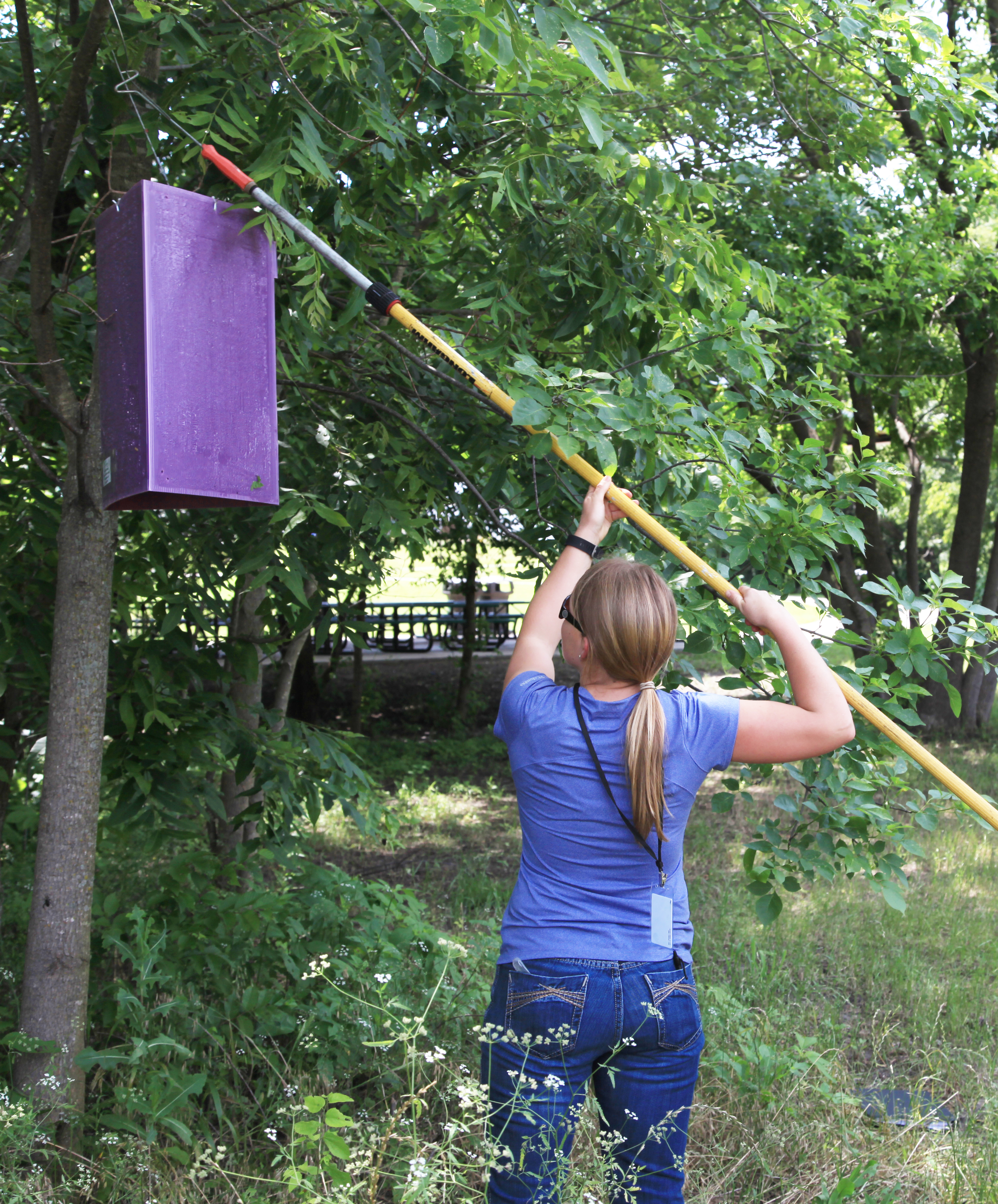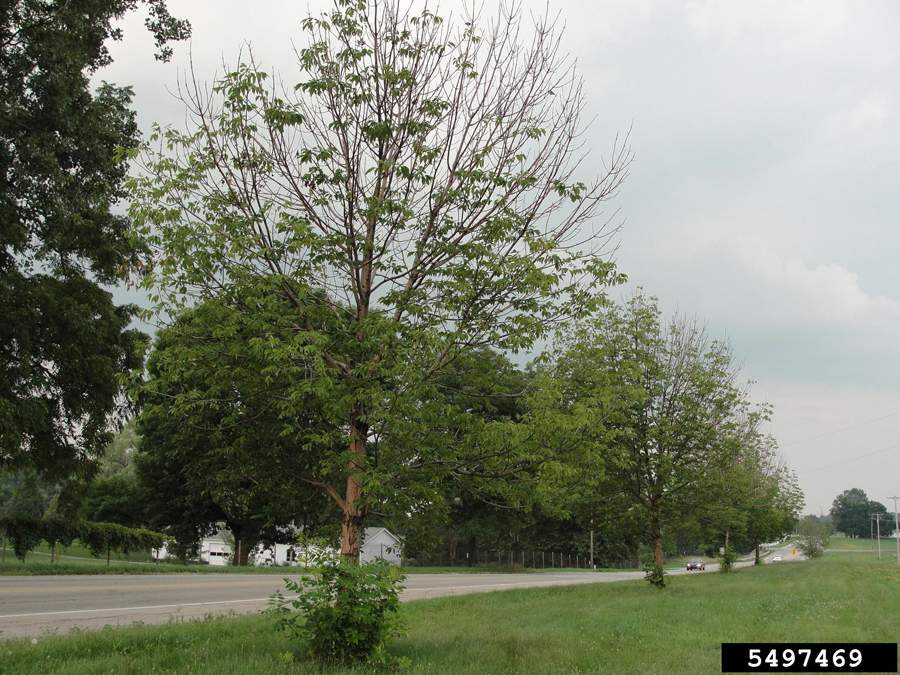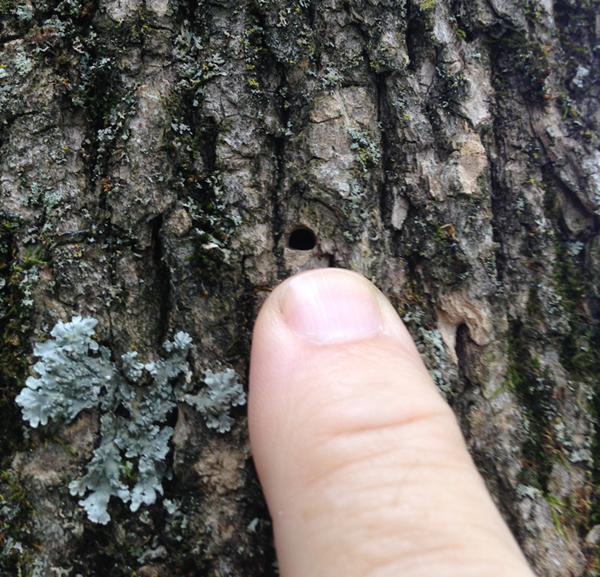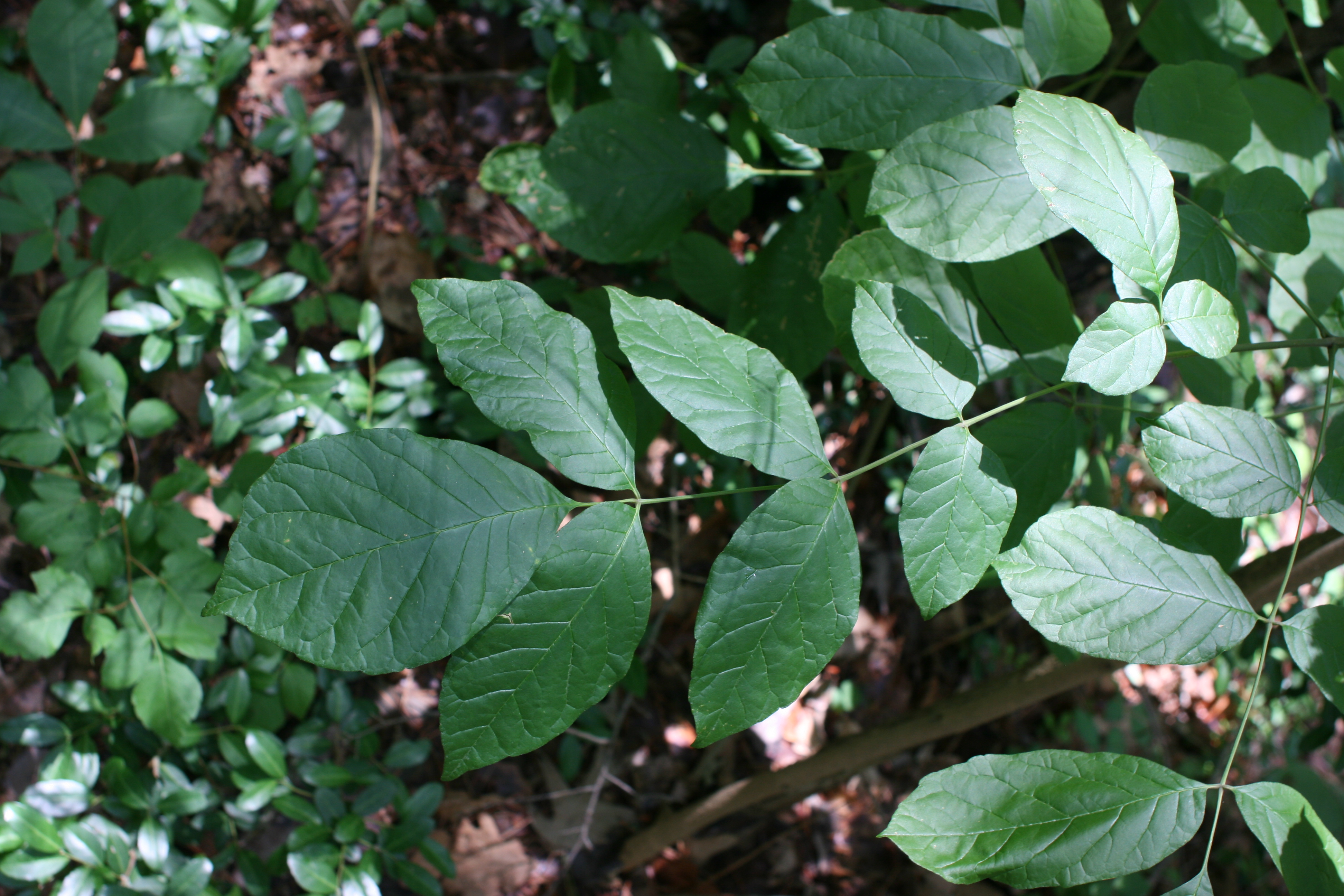
Biologist Emily Cornell hangs a purple sticky trap in a Plano TX ash tree. Sticky traps are just one way to detect the first invasion of emerald ash borer.
This summer my assistant spent the better part of her summer hanging and checking over 100 purple sticky traps to determine whether Texas has been invaded yet by the dreaded emerald ash borer (EAB), Agrilus planipennis. The beetle has already been detected in neighboring states of Arkansas and Louisiana; but much to our relief, after thousands of miles of winding county roads and many hundreds of traps, neither she nor our colleagues in the Texas Forest Service or Sam Houston State University found a single EAB. However, this beetle is elusive. And there is a good chance it may already be infiltrating Texas forests and backyards. If so, the doomsday countdown will have already begun for millions of beautiful ash trees across our state.
In July I had an opportunity to visit Indiana for a workshop on how to identify beetles like the EAB. As I drove down the Hoosier highways it was both impressive and sobering to see all the dead ash trees scattered throughout the landscape. Forests invaded by this beetle are destined to be changed forever.
Trap lines put out by university and Forest Service researchers are only one way to detect this pest. We also depend on the eyes and knowledge of thousands of gardeners, invasive pest spotters, master volunteers and pest management specialists throughout the state. These observations are important, and if I were a betting man I would wager that it will be a report from one of these folks who will spot the first infested tree.

Bark flaking on ash (tree on the right) caused by woodpeckers is one of the earliest and easiest to detect clues to EAB attack. Photo by M. Merchant, Texas A&M AgriLife.
So how do you know if a tree is under attack by emerald ash borer? Here are a few quick tips that can save you a lot of worry, and us entomologists a lot of time chasing down unlikely leads.
Know your ash! First, be sure the tree is an ash tree. Emerald ash borer is known to attack only ash and a related tree called white fringe tree, Chionanthus virginicus. Ash trees are identified by their (1) opposite branching pattern, (2) compound leaves with 5-9 leaflets, and (3) diamond shaped bark ridges on mature trees. There are many other borers that attack trees other than ash. For information about general borer control in trees, see our fact sheet on wood boring insects.
Look for woodpecker damage. Ash borers usually attack a tree first in the upper parts of the canopy, so damage is usually far advanced by the time emergence holes or damage are seen on the lower trunk of the tree. The first sign of EAB attack is vertical cracks in the bark, usually accompanied by woodpecker damage. Woodpeckers are the most important source of EAB mortality, though unfortunately they cannot prevent beetle attack. When foraging for EAB larvae they typically leave bark flaking or “blonding” which is often visible from the ground, even in the tops of trees (see accompanying image). In addition to flaked bark, woodpeckers leave behind irregular peck-holes where they have probed for the beetle larvae under the bark. For more images of woodpecker signs, see this publication from Michigan State University.

Canopy thinning and epicormic shoots at the base of an ash tree under attack by emerald ash borer. Photo by Leah Bauer, USDA Forest Service Northern Research Station, Bugwood.org
Canopy thinning. As the attack progresses, bark cracking continues and the upper ash canopy shows signs of thinning. As the canopy dies back, epicormic shoots may appear at the base of the tree or on the trunk. Epicormic shoots, or water sprouts, are shoots that grow from trees after stress or injury to compensate for the loss of productive leaf surface. These shoots appear as vigorous new growth below the damaged parts of the tree.
The proof: tunnels and emergence holes.

The S-shaped galleries of emerald ash borer serve to distinguish it from all other borers attacking ash. Photo by M. Merchant, Texas A&M AgriLife.
The next clue to an emerald ash borer infestation is the presence of S-shaped tunnels under the now-loose bark of the tree. If you see looping, S-shaped, frass-filled galleries under the bark of your ash tree, you have the first convincing evidence of EAB attack. Though not easy to see, you may also notice 1/8 inch long, D-shaped holes in the bark of the tree. These are emergence holes, used by the adult form of the insect to leave the tree in search of a mate, and the next ash tree to attack. The sizes and shape of the holes are important. Holes longer than 1/8 inch, or holes that are round rather than flattened on one side, are not EAB.

Emergence holes of emerald ash borer are small, only 1/8-inch across. Note the flat bottom, giving the hole a D-shape. Photo by M. Merchant, Texas A&M AgriLife.
So let’s all keep our eyes open for unusual signs of ash dieback, but be sure to check carefully before raising the alarm. If you believe you have strong evidence of EAB in a tree, you can report it through the Texas Invasives Website reporting form for this pest, or contact your local AgriLife Extension or Forestry Service office.

